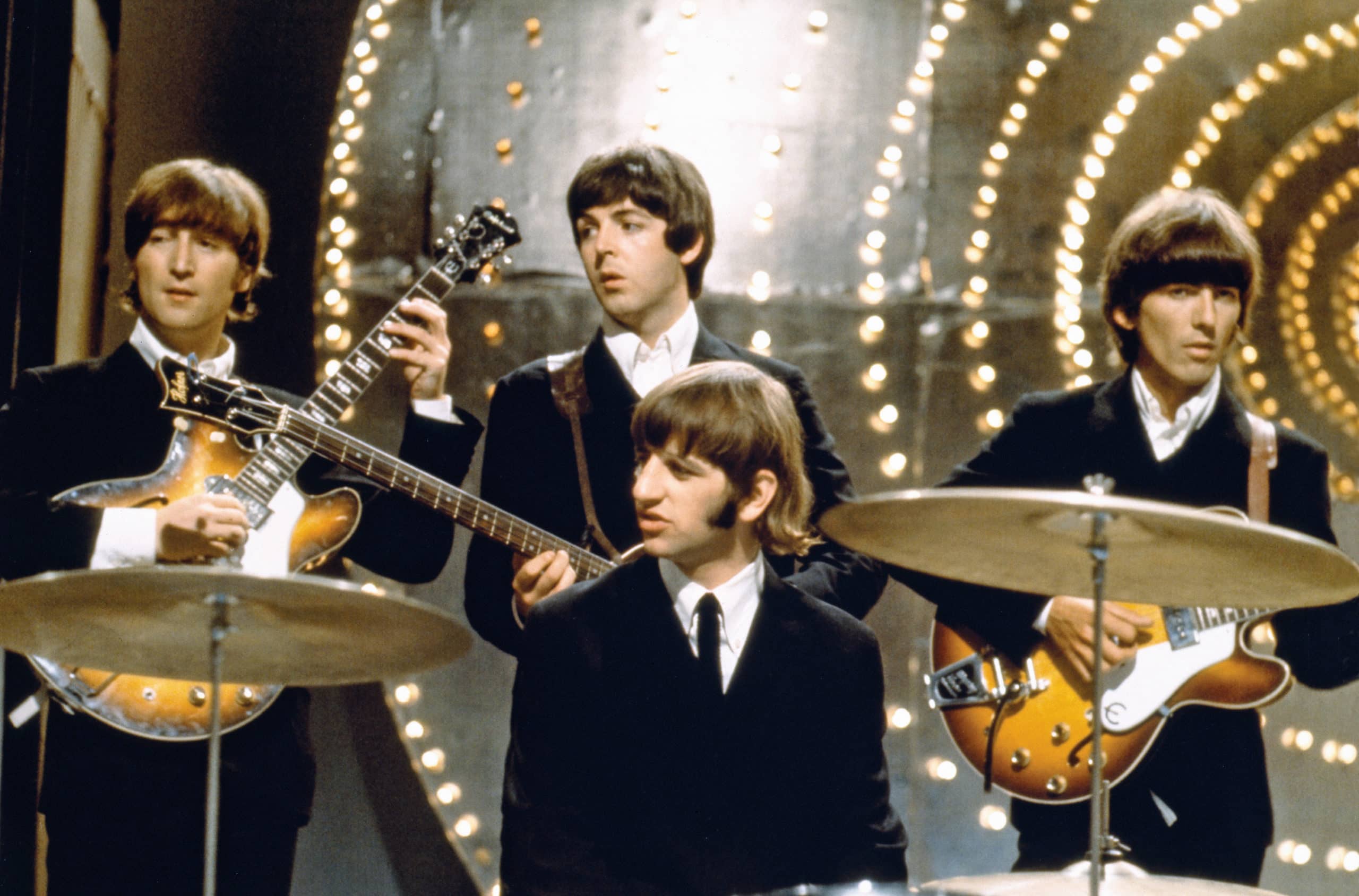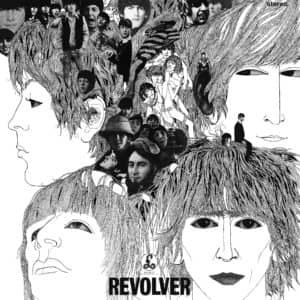Create
Putting the Beatles’ ‘Revolver’ in perspective

 What does it say about the Beatles’ seemingly bottomless well of inspiration that their most creative and cohesive album, full of dash, daring, musical innovation and a brilliant explosion of unexpected colors, came packaged in an austere, black and white jacket with a simple line drawing of their four famous faces and a single word – Revolver, the title of the album?
What does it say about the Beatles’ seemingly bottomless well of inspiration that their most creative and cohesive album, full of dash, daring, musical innovation and a brilliant explosion of unexpected colors, came packaged in an austere, black and white jacket with a simple line drawing of their four famous faces and a single word – Revolver, the title of the album?
What does it say about Revolver that many consider it the Beatles’ greatest achievement, stronger even than the vaunted Sgt. Pepper’s Lonely Hearts Club Band, which followed it less than a year later inside a multicolor, summer-of-love, look-at-me cover?
And what does it say about Revolver that more than five decades after it arrived in 1966, and nearly as long since the band split up, that people are still talking about it as if nobody has yet to make a better pop record?
That last, of course, is arguable, but one thing is without question: Revolver was a watershed in rock ‘n’ roll, and a supernova in pop culture.
Rattle off a few of the song titles: “Eleanor Rigby,” “Here There and Everywhere,” “She Said She Said,” “And Your Bird Can Sing,” “For No One,” “Got to Get You Into My Life,” and the groundbreaking – more like ground-shattering – “Tomorrow Never Knows,” which was famously used in an episode of Mad Men to point an otherwise clueless Don Draper, 1960s advertising shill, towards the future of popular music.
These songs are still very much with us today.
Revolver was re-issued this week in what’s known as an SDE (Super Deluxe Edition), over five CDs in one boxed iteration, and four vinyl LPs in another. Each comes with an oversized history-of-the-album book.
Giles Martin, son of the late Sir George Martin, the Beatles’ producer, has re-mixed the album (it’s his fifth such project with the group’s archives). This means he returned to the original 1966 session tapes, separated out each instrument, voices and other effects, and re-assembled them using his father’s much-loved original as a blueprint.
Happily, this doesn’t result in a “re-imagining” of Revolver – it hasn’t been turned into a hip hop record, for example, with suddenly thumping bass-and-drums – but a sort of clean-and-scrub job. The sonic palette in 2022 is infinitely broader than it was back in the day, and Martin the Younger has made use of better studio reproduction equipment (and a new “separation” technology developed by Peter Jackson and his team while tweaking the audio for last year’s Get Back documentary) to make the space between the instruments broader and brighter.
It’s still Revolver. And, somehow, it’s bigger than ever.
As with Martin’s SDEs for Sgt. Pepper, the White Album, Abbey Road and Let it Be, the big draw for Beatles fanatics (and completists) is the inclusion of session outtakes, peeks behind the creative curtain as John Lennon, Paul McCartney, George Harrison and Ringo Starr – in their mid 20s at this stage – work (alongside the irreplaceable Sir George) through various arrangements of the songs that would become Revolver.
Such was the Beatles’ level of success that the company bosses at EMI Records granted them unlimited studio time, which they were only too happy to use. This was the album where experimentation became the motus operandi: Guitars recorded and then played backwards, Indian drones, tapes sped up or slowed down, strings, horns, tape loops and eerie sound effects.
On paper, that all sounds terribly pretentious. Without songs this good, maybe it might have been.
What does it say about Revolver that it’s as fresh and inviting as it was in 1966?
Ten top takeaways from Revolver Sessions, included in the Super Deluxe Edition:
Got To Get You Into My Life (Second version) – Unnumbered mix. Before somebody got the idea to add a fiery Motown brass section, this propulsive McCartney number was thick with guitars. Here is an astonishing glimpse into the group’s creative process: It’s already a great recording, but – perhaps because it almost sounds like an outtake from Rubber Soul, their previous album – they decided to take it several steps further.
Yellow Submarine (Songwriting work tape – Part 1). A short demo, discovered among Lennon’s home recordings, in which he mournfully sings the lines “In the place where I was born, no one cared, no one cared …” That, of course, morphed into the opening to the Beatles’ iconic kiddie singalong.
Yellow Submarine (Songwriting work tape – Part 2). Lennon and McCartney, on acoustic guitars, work out the chords and the lyrics, joined at the musical hip. Since “Yellow Submarine” was always thought to be a mostly-McCartney composition – happy and go-lucky – this and the previous track are revelations.
Yellow Submarine (Highlighted sound effects). A remix of the finished, familiar track with the homemade underwater and shipboard sound effects brought to the fore. There are many, and this version sounds oddly like a scene from the 1968 Yellow Submarine cartoon film, with which the Beatles were barely involved. Maybe it gave the filmmakers an idea.
Here, There And Everywhere (Take 6). To this day, McCartney believes this is the best song he ever came up with (Lennon, incidentally, loved it too). Here he’s singing a lovely guide vocal, almost in falsetto, making the song even more delicate. This was released in 1995, as a bonus track on a CD single from the Beatles Anthology project, along with the “sound effects” version of “Yellow Submarine.”
Love You To (Take 1). Harrison’s droning Indian song is a highlight of Revolver, because it works beautifully set against McCartney’s melodicism and Lennon’s glibness. Without its sitar, tabla, tamboura and buzzing electric guitar, this draft is utterly different – it’s just George, playing two chords on an acoustic guitar and singing. (A later take includes a dissonant harmony from McCartney that was ultimately rejected.)
Rain (Take 5 – Actual speed). One of Lennon’s dreamiest, druggiest psychedelic pop numbers came about because the instrumental backing track, packed with jangling folk-rock guitars, loopy bass and Starr’s best falling-down-the-stairs drumming, was recorded at breakneck speed and then slowed down before the lead vocals and harmonies were added. This is the backing as it was performed. (“Rain” and “Paperback Writer,” while recorded during the album sessions, were released as a single and were not part of Revolver.)
And Your Bird Can Sing (Second version) – Take 5. Revolver was created through trial and error. If something didn’t work, they simply changed the approach. The first and quite different arrangement of this punchy Lennon number was released on Anthology 2 all those years ago (it’s included here, too) but the real gem is this early run-through of the second arrangement – the one we know and love. Lennon’s single-tracked vocal is front and center, the bass and drums pulse underneath, and the famous twin lead guitars are still being worked out. And there’s an “ahhhhh” section over the instrumental break, later eliminated, that brings to mind the breathtaking “If I Needed Someone” from Rubber Soul.
Eleanor Rigby (Speech before Take 2). Here, George Martin talks with his hired string octet, asking if they prefer playing with vibrato, or without? They try it both ways, and decide it’s better without. McCartney, from the upstairs control room, tells them he can’t hear the difference. But Sir George can, and moments later he and the players cut one of the most enduring strident string arrangements in pop music history.
She Said She Said (Take 15) – Backing track rehearsal. On the last day of the Revolver sessions – they were about to leave for their final European tour – the Beatles cut, in a single session, Lennon’s searing, guitar-drenched psychedelic childhood dream song. There are no vocals on this take, just a cocksure rock ‘n’ roll band making a joyful noise.

Aboard a train in Germany, two days after finishing up the “Revolver” recording sessions in London.

